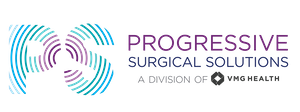Documentation Best Practices in the ASC
Written by: Crissy Benze, MSN, BSN, RN
“If it is not documented, then it is not done” is a phrase all clinical directors have heard ad nauseam. Truly, the regulatory burden on the ambulatory surgery center (ASC) is intense, and in order to demonstrate regulatory compliance, there must be documented evidence. In addition, accurate medical record documentation is imperative. In order to ensure a successful and compliant operation, all staff members — including medical and facility staff — must be dedicated to actively and continuously participating in precise and compliant documentation in the ASC.
Compliance Requirements
There are multiple sources of regulation and oversight when it comes to documentation compliance. Every ASC should pay close attention to state licensure regulations, Medicare Conditions for Coverage (CfCs), accreditation standards, nationally recognized standards and guidelines, standards of care, and best practices. Items must be documented at varying frequency: there are daily, weekly, monthly, quarterly, annual, and variable requirements.
As an example, I’ve listed the quarterly requirements from the aforementioned agencies below.
- Infection control compliance: Conduct a facility audit and report the results to the Quality Assurance and Performance Improvement (QAPI) committee.
- Medical records audit: Conduct a random audit of medical records per facility policy. The audit results are reported to the QAPI committee.
- Peer review: Hold both random and incident-based peer reviews per facility policy.
- Pharmacy inspection: Have the pharmacy consultant inspect medication management. (Note that your state may require more frequent visits.)
- QAPI/Medical Advisory Committee/Governing Body meeting: Hold a meeting and document the meeting minutes.
- Fire drill: Conduct an unannounced fire drill during which a signal is automatically transmitted to the servicing fire department.
- Heating, insulation, and air conditioning (HVAC) inspection, service, and filter changes: Conduct an inspection and service applicable units per the manufacturer’s instructions for use.
Medical Record Documentation
Part of maintaining compliance includes accurate medical record documentation, which is imperative in the ASC. Medical record compliance must be a quality indicator tracked with your facility QAPI program. The goal must always be 100% compliance — there is no room for error! Daily audits should be conducted by nursing staff in addition to random quarterly audits.
The purposes of medical record documentation are as follows:
- Tells the patient’s story by providing an illustrated timeline,
- Shows how patient care decisions are made,
- Shows communication among caregivers,
- Documents compliance with regulations and standards,
- Documents that safe and effective care was provided,
- Creates a legal document,
- Provides documentation for reimbursement, and
- Provides retrospective review of patient care for QAPI activities and peer review.
Stay Organized
You must stay organized and ahead in order to ensure compliance with ASC documentation requirements. As already mentioned, the ASC is extremely regulatory intensive! Furthermore, these regulations, standards, and guidelines are constantly changing and evolving, making them overwhelming and difficult to navigate. To stay afloat, it’s important to keep track of the different requirements and timelines for completion. We recommend compiling the requirements into a list. Keep this list on hand and visible at all times in your ASC. Then, you can set reminders for yourself and track your completion at each variable frequency.
After years of working with ASCs across the country, we have developed a comprehensive list of these documentation requirements (including Life Safety Code requirements), in a Facility Compliance Calendar that is available to eSupport members.
WANT TO LEARN MORE? Join Crissy Benze for a 60-minute educational webinar about documentation best practices in the ASC on Thursday, October 24, at 11:00 a.m. PST | 2:00 p.m. EST Register for the webinar here.




